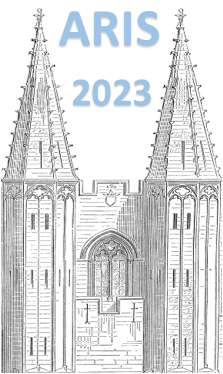Orateur
Description
Muonic x-ray spectroscopy is a technique that utilizes the properties of the muon to obtain information about the structure of the atom and the nucleus. When a muon interacts with an atom, it can be captured in a high principal atomic quantum number state, after which it will fall towards the ground state emitting high energy characteristic x rays. Due to the heavy mass of muons compared to that of electrons ($m_{\mu} \approx 207 m_e$, the muon’s orbitals are closer to the nucleus with that same factor. Hence, the muonic energy levels are more sensitive to nuclear effects. In particular, the finite size correction is increased by a factor close to $10^7$. Consequently, muonic x rays can provide valuable input for laser spectroscopy in the form of high-precision absolute charge radii ($10^{-3}$ relative precision).
While muonic x rays have been extensively studied at the end of the twentieth century, it was limited to target quantities above 10 mg. However, in 2017, our collaboration investigated the use of a high-pressure hydrogen cell with a small deuterium admixture in order to enhance the transfer of the muon to the target atom of interest [1]. With this advancement, measurements on targets of ~5 µg became possible, opening the door to long-lived radioactive isotopes (>20 years) [2]. At low-to-medium atomic numbers, a high isotopic purity is required in order to reliably extract the nuclear charge radius. This purity can only be obtained by using magnetic mass separation for certain isotopes. Therefore, we investigated the feasibility of using implanted targets during a beamtime in September 2022. Besides measurements on implanted targets, the attenuation of the muonic x-ray signal through graphite was quantified. These advancements will allow for absolute charge radii measurements of medium-Z elements that are not available in sufficiently large quantities and/or isotopic purity.
In this contribution, we will report on the recent advancements of the muX collaboration as well as their implications for future research.
[1] Knecht, Andreas, Alexander Skawran, and Stergiani Marina Vogiatzi. "Study of nuclear properties with muonic atoms." The European Physical Journal Plus 135.10 (2020): 1-18.
[2] Adamczak, A., et al. "Muonic atom spectroscopy with microgram target material." EPJA in print (2023).

